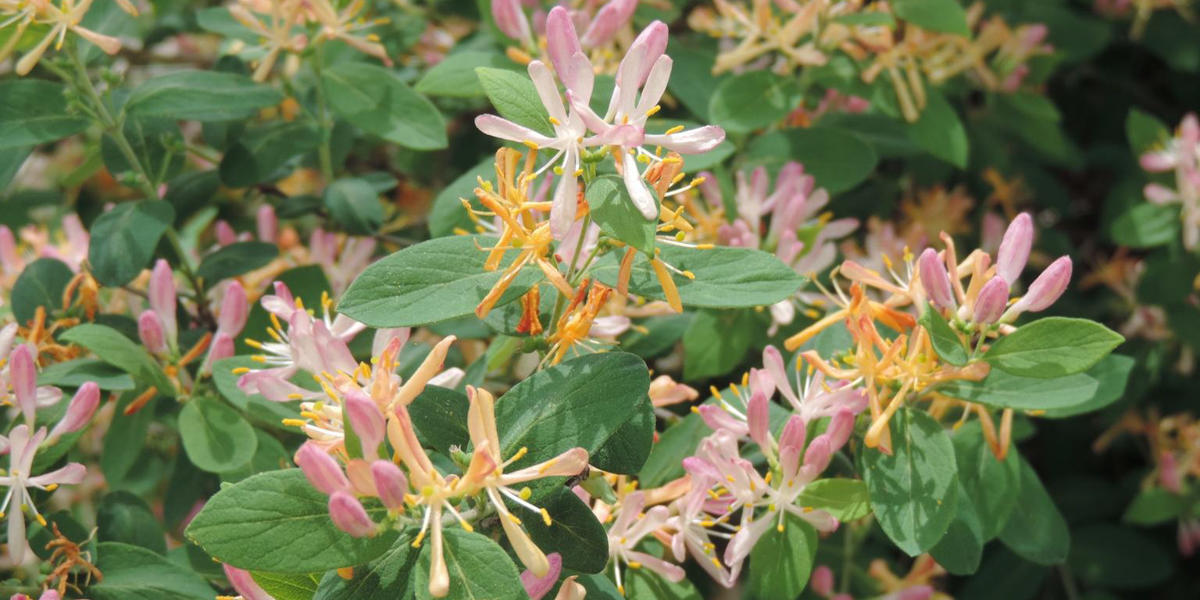
Invasive Tatarian honeysuckle (Lonicera tatarica)
Image credit: Richard Gardner, Bugwood.org, CC BY-NC 3.0 US DEED. Cropped for use.
Background
The majority of honeysuckle species (Lonicera spp.) invading Minnesota are unidentified, making management and regulation challenging. Honeysuckle may be a larval host to the invasive spotted wing drosophila (SWD, Drosophila suzukii) that causes significant damage to berry crops.
The generic designation of “bush honeysuckle” is one of the most highly ranked and most reported invasive plants in the state. Several honeysuckle species were introduced and widely used as landscape plants, providing fragrant flowers on bushes or vines. At least 6 non-native honeysuckles were introduced for landscape purposes that may have hybridized. Not knowing the invading taxa and whether hybridization occurs prevents informed management and regulation.
In addition, there is not comprehensive knowledge of honeysuckle seed production and germination requirements. This information would help determine the level of risk seeds pose for spread and seasonality.
Spotted wing drosophila has impacted fruit production in Minnesota dramatically. There have been observations of honeysuckle as an early-season host for SWD. If that is the case, berry farms may experience significantly higher pressure from SWD when honeysuckles grow nearby.
Research questions
- What is the genetic identity and morphological traits of native, invasive, cultivar, and hybrid honeysuckles?
- What are the genetic relationships between native, invasive, cultivar, and hybrids of honeysuckle?
- How does honeysuckle produce seed and what are the requirements for germination?
- What is the host suitability of honeysuckle for spotted wing drosophila?
- What is the contribution of honeysuckle to SWD crop damage?
Practical implications
With accurate identification of honeysuckle, knowledge of the extent of hybridization, and knowledge of its potential for reproduction and dispersal, researchers will be able to recommend a successful control method. This information will enable risk assessment, policy making, and regulatory decisions.
Outcomes
This project began in January 2024 and is in progress for the next several years. Please check back at a later time for updates.
To stay connected, sign up for the MITPPC newsletter and follow us on Facebook and LinkedIn.